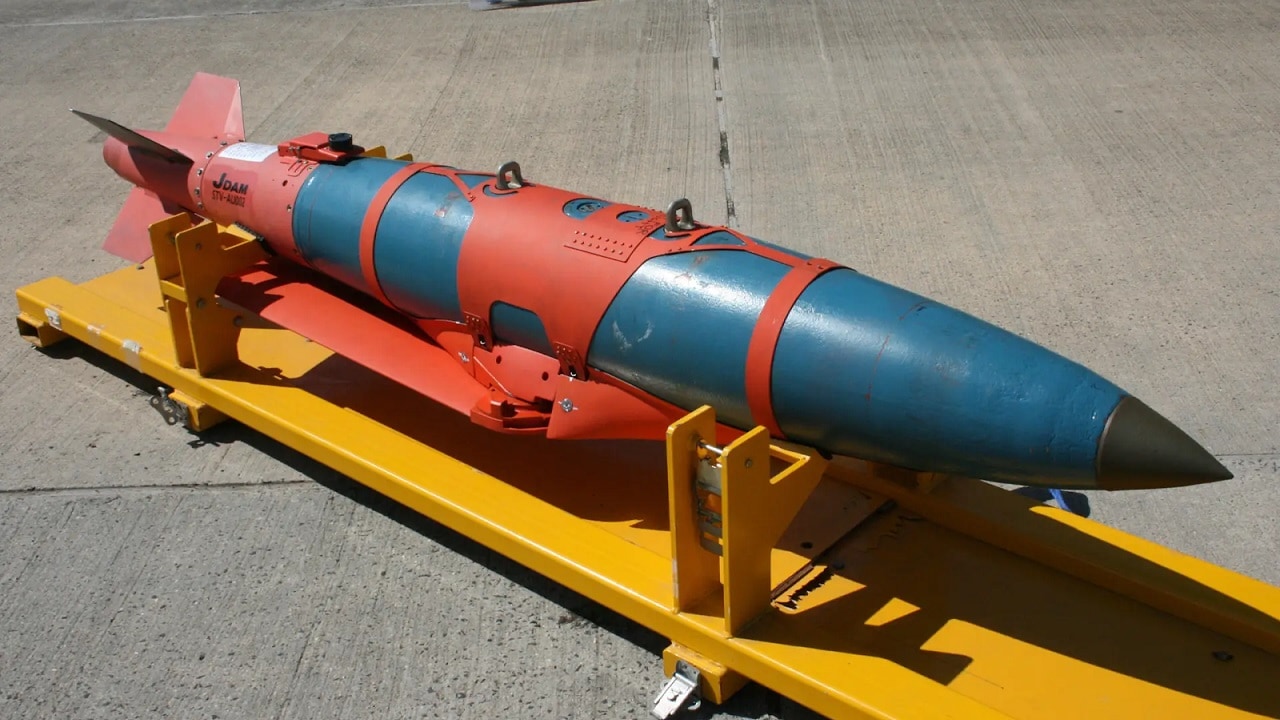Dear loyal readers, your humble correspondent does not claim to be a clairvoyant. But without meaning to brag too much, Warsaw’s announcement that it will send a dozen of its MiG-29s to Ukraine struck me as rather timely, given that it came that a mere week after I mentioned the Polish MiG-29 Fulcrums would be the most sensible choice of an aircraft to send to Kyiv. Poland became the first NATO member to affirmatively answer the Ukrainian government’s increasingly urgent requests for warplanes. Fellow NATO member Slovakia soon followed suit — Bratislava will send its entire 13-jet fleet of Fulcrums to Kyiv.
The question that remains is what sort of armaments these newly acquired MiGs will carry to give Ukrainian pilots an edge against their Russian foes. Well, approximately one month ago, U.S.-supplied Joint Direct Attack Munition-Extended Range bombs, or JDAM-ERs, were delivered into Ukrainian hands.
Fighter Jets Rendered “Useless?”
Within the past week, Business Insider published an article by Christopher Woody titled “Fighter jets are ‘worthless’ over Ukraine, and it’s a sign of what US pilots and troops may face in future battles.” The author’s bottom line up front is that, “After a year of fighting, neither the Russian nor Ukrainian air forces have been able to take control of the skies over Ukraine. This has severely limited the role that fighter jets have played in the conflict, and it’s a preview of what US troops could face in the future, US Air Force officials say.”
While I understand the author’s worries, I think he’s a tad pessimistic in calling fighter jets “worthless.” The struggle for superiority between combat aircraft on one side and air defense systems on the other is as old as aerial combat itself. What’s more, such an account doesn’t factor in the possible advantage of standoff attack capability that a weapons system such as the JDAM-ER confers.
JDAM-ER History and Specifications
The JDAM began its service history in 1997. Essentially, it is a guidance kit that converts unguided “dumb bombs” into all-weather precision-guided munitions. By contrast, the “smart bombs” used during the 1991 Persian Gulf War often had their accuracy hampered by sub-optimal weather conditions. The kit works by hooking up the dumb bombs — munitions from the 500-pound to 2,000-pound weight range — with an integrated internal guidance system coupled to a GPS receiver.
The first-generation JDAMs had a published range of 15 nautical miles and were first blooded in combat during Operation Allied Force in 1999 via the B-2 Spirit bomber. B-2s dropped more than 650 JDAMs against Serbian targets during that campaign, with a reported hit rate of 87%.
Manufactured by Boeing, the JDAM-ER Kit triples the effective range of the original system, extending its reach to a whopping 45 miles. This provides aircraft with true fire-and-forget capability. Gen. James B. Hecker, commander of U.S. Air Forces in Europe and U.S. Air Forces Africa, confirmed that Ukraine’s forces were already using a limited number of these weapons, although he didn’t specify what sort of targets they are attacking or which specific warbirds are delivering them.
Opening the Door for F-16s?
As I also noted in my article on March 9, the fact that Poland, which like Ukraine is a Slavic language-speaking nation and former member of the Warsaw Pact, already has the F-16 Fighting Falcon, also known as the Viper, casts a dubious shadow on the Biden administration’s official excuse for not sending Vipers to Ukraine.
What’s particularly relevant in this case is that Warsaw’s F-16-C/D Block 52s already carry the JDAM.
If the Biden administration ever woke up to the obvious, a pairing of the F-16 and the JDAM-ER could be a match made in heaven for the Ukrainians, and a match made in hell for the Russians.
Christian D. Orr is a former Air Force Security Forces officer, Federal law enforcement officer, and private military contractor (with assignments worked in Iraq, the United Arab Emirates, Kosovo, Japan, Germany, and the Pentagon). Chris holds a B.A. in International Relations from the University of Southern California (USC) and an M.A. in Intelligence Studies (concentration in Terrorism Studies) from American Military University (AMU). He has also been published in The Daily Torch and The Journal of Intelligence and Cyber Security. Last but not least, he is a Companion of the Order of the Naval Order of the United States (NOUS). In his spare time, he enjoys shooting, dining out, cigars, Irish and British pubs, travel, USC Trojans college football, and Washington DC professional sports.

